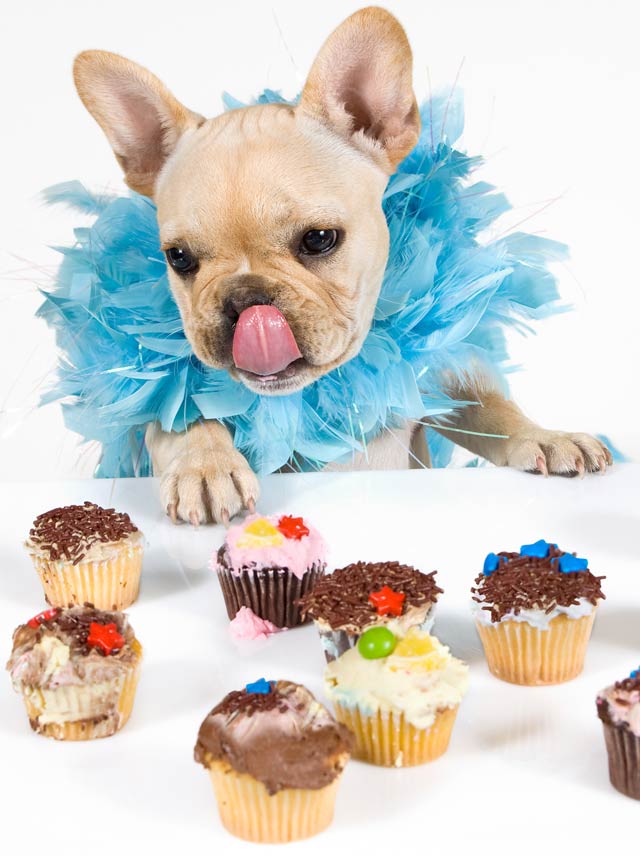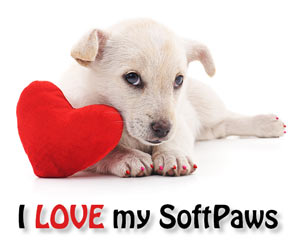Xylitol Toxicity in Dogs
 Although xylitol is safe for humans to consume, it is toxic to dogs. It is being found in more human products all the time, so it's important to be aware of how dangerous it can be for dogs and where to look for it.
Although xylitol is safe for humans to consume, it is toxic to dogs. It is being found in more human products all the time, so it's important to be aware of how dangerous it can be for dogs and where to look for it.
What Is Xylitol?
Xylitol is a natural sugar substitute commonly used in many human products today. It has the ability to fight plaque, so it has become a popular additive in human foods, toothpastes, and medications. Our canine friends absorb the substance much more rapidly from the gut into the bloodstream than we do, and it causes a rapid release of insulin. This results in a fast drop in blood glucose levels, which can be life-threatening.
Xylitol's effects on cats are not well-known yet because they are less likely to ingest sweets than dogs.
What Products Contain Xylitol?
Because xylitol is becoming more and more common in many human products, dogs have ample opportunity to get into it and suffer toxicity. Following is a list of products that commonly contain xylitol. This is, by no means, a comprehensive list.
- Toothpastes
- Gum
- Mints
- Other candies
- Human multivitamins
- Human nasal sprays
- Bulk xylitol, for baking
NOTE: Natural products, including toothpastes, often contain xylitol, too. Xylitol is a natural substance and, as such, can be found in these products, but it is still toxic to dogs.
Surprising Human Products That Contain Xylitol, per the Pet Poison Helpline Website:
Over-the-counter medications:
- Axia3 ProDigestive Antacid (flavored chewable tablets, proprietary amount)
- Children's Allegra Oral Suspension
- Fleet Pedia-Lax Liquid Stool Softener
- Umcka Cold and Flu chewable tablets (homeopathic product)
Dietary supplements, vitamins:
- KAL Colostrum Chewable, Vanilla Cream (chewable tablets)
- KAL Dinosaurs Children's Vitamins and Minerals (chewable tablets)
- Kidz Digest Chewable Berry from Transformation Enzyme
- L'il Critters Fiber Gummy Bears
- Mega D3 Dots with 5,000 IU of Vitamin D3 per "dot" (dissolvable tablets)
- Stress Relax's Suntheanine L-Theanine chewable tablets
- Vitamin Code Kids by Garden of Life (chewable multivitamins)
- Super Sleep Soft Melts by Webber Natural (dissolvable tablets)
Nasal products:
- Xlear Sinus Care Spray
- Xylear Nasal Spray (for adults and children)
- Xyliseptic Nasal Spray
Prescription drugs:
- Abilify Discmelt Orally Disintegrating Tablets (aripiprazole)
- Clonazepam Orally Disintegrating Tablets, benzodiazepine
- Emtriva oral solution (emtricitabine), HIV-1 reverse transcriptase inhibitor
- Mobic Oral Suspension (meloxicam), nonsteroidal anti-inflammatory
- Neurontin (gabapentin) Oral Solution
- Riomet (metformin) Oral Solution, antidiabetic agent
- Varibar barium sulfate products, liquids and puddings for swallowing studies
- Zegerid Powder for Oral Suspension (omeprazole), proton pump inhibitor
Foods with xylitol as the primary sweetener (excluding gums and mints):
- Clemmy's Rich and Creamy ice cream products
- Dr. John's products (hard and soft candies, chocolates, drink mixes and so on)
- Jell-O sugar-free pudding snacks
- Nature's Hollow jams, syrup, ketchup, honey and so on
- SparX Candy
- Zipfizz energy drink-mix powders
Peanut Butter Sometimes Contains Xylitol
Xylitol is being used as a sweetener in an increasing number of peanut butter brands. This is concerning because peanut butter is commonly used as a treat or a way to give medications to dogs. People may not be used to looking for xylitol as an ingredient in peanut butter. It's very important to be vigilant and check all human products for xylitol before giving them to your dog.
Signs of Xylitol Toxicity in Dogs
Since xylitol is rapidly absorbed into a dog's bloodstream shortly after ingestion, toxic side effects can be managed most effectively if the owner takes action early in the process. The following signs of xylitol ingestion can begin to occur as soon as 30 minutes after consumption:
- Vomiting
- Diarrhea
- Lethargy
- Weakness
- Seizures
- Collapse
- Coma
- Death
Consumption of higher amounts of xylitol by dogs can also cause liver disease, blood clotting disorders, electrolyte imbalances, and death.
Treatment for Xylitol Toxicity in Dogs
Immediate veterinary care is necessary when a dog consumes xylitol. Depending on the case, one or more of the following treatments may be necessary:
- Induction of vomiting (this will not be done if too much time has gone by since the product was ingested or if hypoglycemia is already present)
- IV fluid therapy to support the dog's systems and prevent dehydration
- Administration of dextrose IV in order to combat the effects of hypoglycemia until the dog is able to regulate his own blood glucose again
- Blood work to help determine if liver damage, clotting issues, and/or electrolyte imbalances are present
Once treated, the toxic effects of xylitol are usually not long-lasting. However, in severe cases, liver damage may not be reversible. It has been suggested that veterinary liver support products may be helpful in cases where long-term side effects are apparent.
Prevention of Xylitol Toxicity in Dogs
- It is not required that xylitol be listed in any particular order on the labels of medications and supplements, so appearing low on the list of ingredients doesn't necessarily mean that there is not a toxic amount in the product. As such, it is important to be cautious and aware of any possible ingestion.
- Many products that ARE labeled as containing xylitol do not list how much is present. Assume that your pet has eaten a toxic dose if he's eaten something that contains xylitol.
- The documented toxic dose of xylitol is considered to be 0.1 g/kilogram, and doses greater than 0.5 g/kilogram can result in severe liver damage and blood abnormalities. Chewing gum and mints often contain .22 to 1 gram per piece, so one piece is often enough to cause low blood sugar in a 10-pound dog.
What to Do If Your Pet Eats Something Containing Xylitol
Call your veterinarian immediately if your pet has eaten something known or suspected to contain xylitol. If your veterinarian is not available, call your local veterinary emergency hospital, or the Pet Poison Hotline at 855-764-7661. Time is of the essence in a xylitol emergency.
Resources:
- Common Toxicities in the Emergency Room, International Veterinary Emergency and Critical Care Symposium 2008, Andrew Linklater, DVM
- Xylitol Toxicosis October 2008, Carlye Rose, DVM ABVP
- VIN Consult, October 2008, Eric Dunayer, MA, VMD, DABT, DABVT.
- Abstract: Acute Hepatic Failure and Coagulopathy Associated with Xylitol Ingestion in Eight Dogs, JAVMA October 2006 (7)
- Web page: http://www.petpoisonhelpline.com/2013/11/theres-xylitol/, "There's xylitol in that too?" Ahna Brutlag, DVM, MS, DABT, DABVT
You May Also Like These Articles:
How To Tell If Your Dog Is Sick
Why Is Chocolate Bad for Dogs?
Emergency Care for Suspected Poisoning
Disclaimer: This website is not intended to replace professional consultation, diagnosis, or treatment by a licensed veterinarian. If you require any veterinary related advice, contact your veterinarian promptly. Information at DogHealth.com is exclusively of a general reference nature. Do not disregard veterinary advice or delay treatment as a result of accessing information at this site. Just Answer is an external service not affiliated with DogHealth.com.
Notice: Ask-a-Vet is an affiliated service for those who wish to speak with a veterinary professional about their pet's specific condition. Initially, a bot will ask questions to determine the general nature of your concern. Then, you will be transferred to a human. There is a charge for the service if you choose to connect to a veterinarian. Ask-a-Vet is not manned by the staff or owners of DogHealth.com, and the advice given should not delay or replace a visit to your veterinarian.



